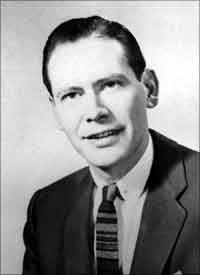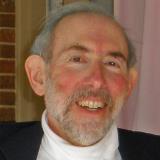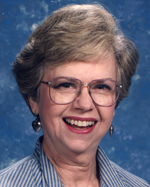One of the more curious items in the Gray Barker Collection is a letter, on NASA stationery, addressed to “Dr. Karl Merditt Allenstein, 1316 Leishmann Strasse, New Kensington, PA.”
The letter is dated August 6, 1975, and is obviously a response to an inquiry. It’s also obvious that the said “Dr. Allenstein” originally addressed his inquiry to Wernher von Braun, for the writer of this letter expresses regret that Dr. von Braun is no longer at NASA. He undertakes himself to provide the information sought, namely that it is “highly unlikely” that a recently discovered invisible star might really be a space ship. “Nevertheless,” he writes, “I found your theories interesting.”
According to Mapquest, there’s no “Leishmann Strasse” in New Kensington, Pennsylvania. There is, however, a “Leishman Avenue,” where the spaceship theorist must have been living at the time. And “Dr. Karl Merditt Allenstein” … hmmm … I wonder who that could be?
The Barker files are filled with correspondence to, about, and (mostly) from Carl Meredith Allen. I cataloged 46 of these “Allende letters,” which bore a date and/or postmark and therefore could be useful in tracking the writer’s peregrinations. I estimated that these were at most two-thirds of the total number of Allen’s letters in the files. The series begins with the four-page letter sent from Clarksburg, West Virginia, on August 21, 1977—apparently the morning after the “Carlos Allende Speaks” interview—which I’ve described in an earlier post. It keeps on rolling to the end of 1985, a full year after Barker’s death. This perhaps suggests that, by the 1980s, Allen had given up expecting to receive from Barker much in the way of reply.
The postmarks show “Allende” to have indeed been a gypsy, not in ethnicity but in manner of life. In November 1977 he’s in Prescott, Arizona, the place where James Moseley tracked him down the previous July. (See my post on “Finding Carlos Allende.”) In early 1978 he shuttles between Prescott, Matamoros (Mexico, just across the Texas border), and Guadalajara, Mexico. He turns up in 1980, after a long silence, in Rapid City, South Dakota. In 1981 he’s in Albuquerque and Ruidoso, New Mexico, and Colorado Springs; for a few months at the end of ’81 and the beginning of ’82, in Walsenburg, Colorado; that spring he’s in the Denver area, Colorado Springs, and Pecos, New Mexico. In a letter of August 20, 1982, postmarked Santa Fe, Allen writes he’s in Omaha … And so on.
His tone is testy, often abusive. He knows perfectly well that Barker’s using him as a cash cow, and he resents it. But along with this there’s always a note of pleading in his letters. He demands that Barker send him books—Anna Genzlinger’s The Jessup Dimension, Barker’s own Strange Case of Dr. M.K. Jessup—and Barker is glad to oblige. What Allen really yearns for, respectful attention, Barker can’t give. From the moment he laid eyes on Allen, it would seem, Barker determined this was not a man to be taken seriously. His and Moseley’s interviewing Allen while drunk surely didn’t get the relationship off to a good start.
’Twas not always thus. On February 6, 1963, Barker had written to Allen’s New Kensington address, seeking information from and about the elusive mystery man. (That was about the same time that Jerry Clark and I were embarked on the same quest, as I’ve described in an earlier post.) The file contains no reply; maybe Allen had left New Kensington, or maybe he shrewdly realized that to keep the UFOlogy world’s interest he’d better stay mysterious. Fourteen years later he and Barker met, and the illusion shattered. Now it was Allen who was the seeker, the beggar, the tiresome pest.
Barker’s letters to Allen are a small drop in the bucket of Allen’s outpourings. They’re also a lot more enjoyable reading. Brilliantly tongue-in-cheek, they’re on the surface models of respectful affability. I’d guess that Barker supposed Allen was too obtuse to realize Barker was making fun of him. I’d also guess that Barker was wrong. Allen, who may have been insane but was no fool, understood full well what was going on and seethed with rage over it. Yet Barker’s letters don’t read like the heartless baiting of a lunatic. If I’m not mistaken, there’s in them a real kindness, even tenderness, for the horribly wounded man Barker had searched for and now, possibly to his regret, had found.
As if Barker sensed that, in poking gentle fun at Allen, he was doing the same to himself.

Gray Barker 1925~1984
“Dear Capt. Allende,” he writes on October 18, 1977. “I must apologize for not answering your communications until now. … Both James Moseley and I enjoyed very much talking with you and hearing your ideas on UFOlogy and the Philadelphia Experiment. I do regret that due to the fact that this was also a social occasion, both he and I were warmed very much by the Spirit of the Grape. Fortunately I do have your tapes and by replaying them can remember much that I otherwise might have forgotten. …
“Actually meeting and talking with you was an experience which both honored and informed me. In fact, your positive views on the Philadelphia Experiment so impressed me that I would like to do some actual research on this matter. I am wondering if you have any names of other witnesses to this event so that possibly they might be contacted? If I could get anything new on this which has not been published widely I might be able to get an article on this into OFFICIAL UFO.
“I have written to Varo in the past inquiring about Michael Ann Dunn (who is supposed to have typed out the Varo Edition) but am informed they have no personnel records on her. This is very odd—almost as if she Vanished.”
Yes, “Vanished”—with a capital V. With that capital letter, Barker mocks the portentousness of his own writing. And it is pretty funny. (But really, who was Michael Ann Dunn? And why has no one been able to find out anything about her? These are real, not Barkerian mysteries.) So is the spectacle of Barker as huckster, scraping the bottom of every conceivable barrel for “anything new” that he can peddle.
Yet I also hear the voice of the other Barker, the genuine seeker, who half believes that “other witnesses to this event” might really exist. That the invisible ship was an “event,” and not just the fantasy of an invisible man who’d spent his life aching to be seen.
More than four years later, on December 9, 1981, Barker writes to “Carlos Miguel Cristophoro Allende” at “General Delivery, Pecos, NM.” He thanks him “not only for [y]our latest letter concerning Mr. Moore, but for all your other missives, especially the annotated edition of THE PHILADELPHIA EXPERIMENT by Moore/Berlitz, which set some of the record straight.” (Annotated books–Allen’s favored mode of communication!) With this, William L. Moore—and his book, and the movie that took its title from the book—enter the story.
Reprinted With Kind Permission from This Original Article

Author David J. Halperin can be reached directly by email at david@davidhalperin.net, or on Facebook.
Michael Ann Dunn In Memoriam

Michael Ann Dunn 1939~2007
She was born Michael Ann Dunn on December 4, 1939 and began her life at 1222 East Waco Avenue in Dallas, TX. She taught first grade and became a successful businesswoman. When Michael Ann died March 28, 2007 in a Texas hospice at the age of 67, she was survived by her husband of 47 years, two sons, her mother and stepfather, two brothers and two sisters, and four grandchildren. Out of respect and privacy for the family, her married name will not be revealed and family members will not be identified.
“Miss Michael Ann Dunn has undertaken the task of rewriting this book including all notes, interjections, underscoring, and etc. By form, position, color, and footnotes as much of the meaning and relationships of the original annotated copy is retained as possible…” With these words, our young Miss Michael Ann Dunn was given the elaborate task of producing a mimeographed edition of the original annotated paperback copy of Morris K. Jessup’s Case for the UFO, with two letters Jessup received from Carl Meredith Allen (alias Carlos Allende) attached. To accomplish this, she would have copied the entire text of Jessup’s Case for the UFO onto stencils, which were run off in black ink. Then the annotations were run off, in their proper place on the pages, in red.
This schoolgirl, in creating this annotated facsimile at the behest of Austin Stanton, president of the Varo Manufacturing Company of Garland, Texas, launched a mystery that would eventually spawn two movies, several books and television documentaries, and dozens of magazine articles and websites. It would become a mystery that would be exaggerated out of all proportion by the tragic suicide of Jessup in 1959. Global interest (media and otherwise) in this story continues to this day.
There must be interesting memories and recollections of how Miss Michael Ann Dunn came to this task for Austin Stanton, how she felt about things at the time, how long it took, and the atmosphere at Varo surrounding the creation of this document. Did she have any sense of what she was doing and why?
How did Michael Ann feel about her role with Varo in the years that followed? Did she have any idea that she had become an integral part of a widespread and persistent legend since she was identified by name in the Introduction of this Varo edition? Did she ever know that she had become an elusive mystery in her own right? [1]
The Varo edition contained close to two hundred retyped mimeographed pages including the Carl M. Allen letters, and a special three page introduction written by the Office of Naval Research. It was printed on standard letter size (8.5″x11″) paper and bound with plastic covers. Eventually there were approximately 127 copies produced and circulated and some copies ended up in the hands of the general public. The book instantly became the object of greatest value to any UFO buff. Gray Barker, publisher of UFO-related materials, produced and sold some facsimile copies of the Varo Edition in 1973.

“The genesis of the Philadelphia Experiment myth dates back to 1955 with the publication of The Case for UFO’s… The Office of Naval Research never conducted an official study of the manuscript… and we do not have even a file copy of the annotated book.” – Betty W. Shirley, Head of Research and Public Inquiries Section / Dept. of the Navy Office of Information.
[1] “Michael Ann Dunn In Memoriam” by Robert A Goerman

